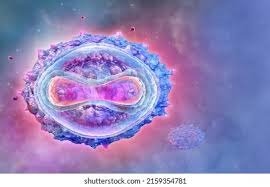
What is Monkeypox?
Monkeypox is a rare viral disease caused by the monkeypox virus, a member of the Orthopoxvirus genus,

which also includes the variola virus (responsible for smallpox) and the vaccinia virus (used in the smallpox vaccine). It was first identified in 1958 when two outbreaks of a pox-like disease occurred in colonies of monkeys kept for research, hence the name “monkeypox.” The first human case of monkeypox was recorded in 1970 in the Democratic Republic of Congo (DRC).

Types of Monkeypox
There are two distinct genetic clades of the monkeypox virus:
- Central African (Congo Basin) Clade:
- Found primarily in Central Africa, particularly in the Congo Basin region.
- More virulent and associated with more severe disease.
- Higher mortality rate compared to the West African clade.

- West African Clade:
- Found in West Africa, particularly in countries like Nigeria and Liberia.
- Less virulent and generally associated with milder disease.
- Lower mortality rate compared to the Central African clade.
Symptoms of Monkeypox
Monkeypox symptoms are similar to those of smallpox but generally milder. The disease usually begins with:
- Initial Symptoms (Prodromal Phase):
- Fever: Often the first symptom, can be high.
- Headache
- Muscle aches (Myalgia)
- Back pain
- Swollen lymph nodes (Lymphadenopathy): This is a key distinguishing feature from smallpox.
- Chills
- Exhaustion

- Rash Development:
- 1 to 3 days after fever onset, a rash begins to develop.
- The rash typically starts on the face and then spreads to other parts of the body, including the palms of the hands and soles of the feet.
- Lesions progress through the following stages before falling off:
- Macules (flat, discolored spots)
- Papules (raised bumps)
- Vesicles (fluid-filled blisters)
- Pustules (pus-filled lesions)
- Scabs (which eventually fall off)
- The rash usually lasts 2-4 weeks and can leave scars.
Cure and Treatment of Monkeypox
There is no specific cure for monkeypox, but the disease is usually self-limiting, meaning it will typically resolve on its own. Treatment focuses on relieving symptoms and managing complications. Here are key points about treatment:
- Supportive Care:
- Pain and fever management: Using medications like acetaminophen (Tylenol) or ibuprofen.
- Hydration: Ensuring the patient remains well-hydrated, especially if experiencing fever or vomiting.
- Secondary bacterial infections: Can be treated with antibiotics if they occur.
- Antiviral Medications:
- Tecovirimat (TPOXX): An antiviral drug approved for treating smallpox, has been used under specific circumstances to treat monkeypox.

- Cidofovir and Brincidofovir: These are other antivirals that might be considered, though their use for monkeypox is less well-established.
- Vaccination:
- Smallpox vaccine (Jynneos or Imvamune): Provides cross-protection against monkeypox and can be used for pre-exposure or post-exposure prophylaxis.
- Vaccination post-exposure: Can reduce the severity of the disease if given within a few days of exposure.
Prevention
- Avoid contact with animals that could harbor the virus, particularly in regions where monkeypox is endemic.
- Practice good hygiene and avoid close contact with individuals who are infected.
- Vaccination may be recommended for those at high risk, such as healthcare workers or individuals in outbreak areas.

In summary, while monkeypox can be serious, especially in regions with limited healthcare resources, it is generally a manageable disease with supportive care and preventive measures.
